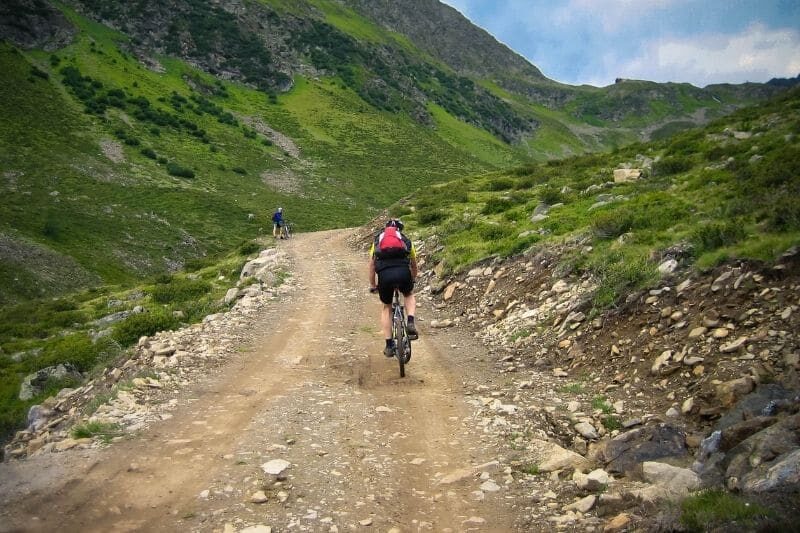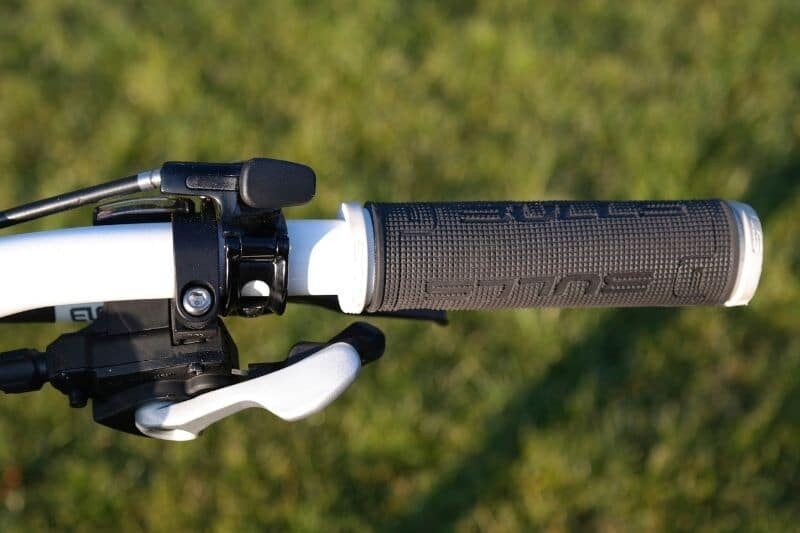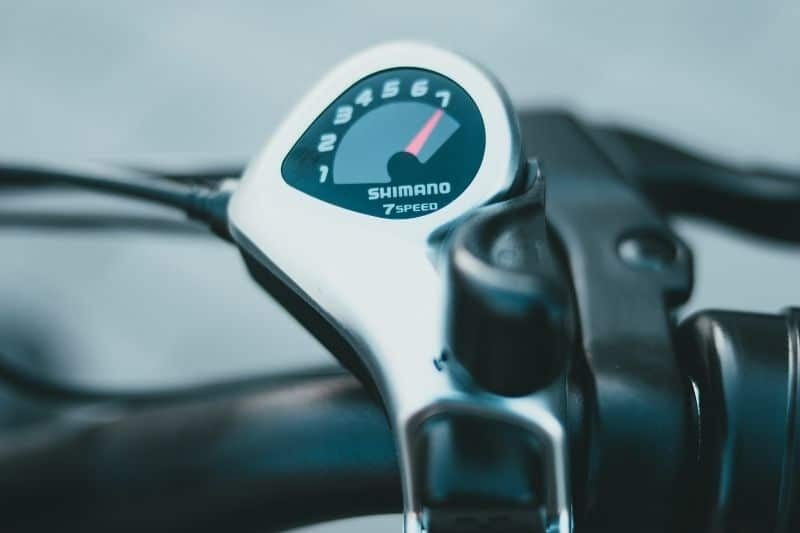Bikes, though wonderful, can sometimes be a little confusing to use. This is especially true when considering how to use bicycle gears. There are a number of variations with gear components, and things can seem complicated – especially for beginners!
Sometimes, we just need a little helping hand. This includes learning how to get the most out of the gears on our own bike, as well as knowing when to change gear, or even which gear we should be in.
Understanding Bike Gears
Understanding how to use bicycle gears can be tricky, especially when you’re new to cycling, or haven’t ridden in a while.
However, getting the most out of your gears, and understanding when it’s best to change gear, can be a transformative skill that helps make cycling easier.
Figuring out how to use bicycle gears can also improve your overall efficiency, and most importantly, your enjoyment of cycling!

What Are the Gears on a Bike For?
Gears on a bicycle are there to allow you to maintain a comfortable cadence (the rhythm and tempo of your pedalling) whilst travelling at different speeds.
This allows you to access more varied terrain on your bicycle due to the range in gears. For example, the higher up the cassette the chain is, the easier it’ll be to ride uphill.
How to Use Gears on a Bike
In order to correctly use the gears on your bike, you’ll need to figure out which kind of mechanism changes your gears.
There are many different types of gear shifting mechanisms. These can include:
- Twist-grip shifters
- Downtube shifters
- Bar-end shifter
- Trigger shifters
- Integrated road gear shifter and brake levers
All of the above gear mechanisms will be operated with your hands. The next step is to figure out how to use bicycle gears at the correct time.
Typically when climbing, you’d want to put your bike in a lower gear. This will allow you to pedal easier to get over the hill. On the contrary, if you’d like to pedal fast along a flat road, shifting your bike into a high gear would be best.

How Should a Beginner Ride a Bike with Gears
Firstly, a beginner should familiarise themselves with the gears on their bicycle in order to understand how to use bicycle gears. As you can only change gears while pedalling, this is an important skill to practice.
After this, the focus should shift to how to use bicycle gears when appropriate. We’ve covered an example of this – shifting to an easier gear when cycling uphill, to help make climbing more comfortable.
Beginner riders should try not to worry too much about always being in the correct gear! With time, it will become second nature.
Which Gear on a Bike is Easiest?
The easiest gear on the bike will usually depend on the type of bicycle that you’re riding. However, a hybrid bike with 7 gears will have its ‘easiest’ gear at the top of the cassette, which is located on the rear wheel.
If the shifting mechanisms for your gears display numbers, the same ‘easiest’ gear on the cassette will be referred to as gear ‘1’. This gear is great for climbing and/or slow speed riding.
Is Gear 1 High or Low on a Bike?
Gear ‘1’ on a bike is a low gear: this is the same for gears in a car. This gear is best for climbing, riding over difficult terrain, and riding slowly.
This gear may also be referred to as the ‘easy’ gear.

7-Speed Bike Gears Explained
A 7-speed bike is one that has a single chain ring (the round component that the chain sits on, and the cranks and pedals attach to) at the front, and 7 cogs at the back. This collection of cogs is referred to as a ‘cassette’.
Because the cassette is made up of 7 cogs (speeds) it provides 7 different gears. These gears will range from 1, which is the easiest gear, to 7, which may be referred to as a ‘high gear’ and is most suitable for riding fast downhill, or on the flat.
A 7 speed cassette is often found on city bikes, hybrid bikes, and children’s bikes. It offers a great range of gear options without being too complex to maintain or use. Hence, it’s very popular among commuters.
How Do You Use a Shimano 7-Speed Shifter
In order to use a standard Shimano 7-speed shifter to change gear, you’ll need to press the main shifter with your finger while riding forwards, every time you’d like to change into a lower gear.
You should press the other shifter (which tends to be a little smaller) with your finger to change into a higher gear.
With most types of gear shifters, there will be two gear levers/shifters to change the back gears, which will either take you into a higher or lower range.
What is the Difference Between a 1-Speed and 7-Speed Bike?
A 1 speed, commonly referred to as a single speed, features only one cog at the back, thus only providing one gear. This type of bike is low maintenance, simple, and easy to use.
It’s not an easy bike to ride up steep gradients. However, it is the perfect bike for use in cities or towns.
A 7-speed bike is great for riding on varied terrain, and is especially useful for commuters who want an easier, less sweaty ride to work.
7-speed bikes aren’t as easy to look after as single speeds. There are more moving parts, which need regular TLC, and in the long run could mean more parts to replace.

21-Speed Bike Gears Explained
Unlike a 7-speed bicycle, a 21-speed bike has 3 chainrings at the front of the drive chain. These three different chainrings allow for three times as many gear ratios to be created using the 7-speed cassette.
The 7-speed cassette is still present, it’s just now coupled with three different chain rings at the front which create 21 gears. There is also another handlebar shifter for these front gears, on the opposite side of the bars to the back gears.
These new chainrings create a wide range, especially useful for those looking to ride uphill or on varied terrain more often. The two smaller chainrings provide lower gear ratios.
Interestingly, the 21-speed option has become less popular in recent times. However, it’s still a great option for those looking for a wide gear-range, and is commonly seen on hybrid bicycles.
What is the Difference Between 7-Speed and 21-Speed
As we’ve covered, the main difference between a 21-speed and a 7-speed is that the former has more range in gears, due to the added chainrings at the front.
However, a 21-speed will contain more components (triple chainring and front derailleur) thus is more complicated to use. It can also be costly to maintain, and will weigh more than a 7-speed.
A 7-speed is easier to use due to only having one chainring, meaning there is only one gear shifting mechanism (21-speeds have two, one for the front and one for the back gears). In addition, it’s lighter.
The main downside to choosing a bicycle with a 7-speed set up is you’ll have a smaller range of gears available.

How Many Gears Do I Need on a Bike?
This will depend on your cycling demands. These will include where you ride, how experienced you are, and how fit you are.
Riding in hilly areas will mean that you’ll want more gears coupled with lower gear ratios. In flatter areas you may be able to get away with a single speed bike, or even a fixie.
Stronger, more experienced riders may be more interested in larger gear ratios. These will be best suited to tackling steep climbs and varied terrains.
Commuters who want to regularly cycle to work may want to look at more low maintenance options. A 7-speed bike is a popular choice here. There’s still a good range of gears, and they benefit from being simple and quick to maintain, or fix on the go.
Overall it’s down to individual needs and preferences. I’d always suggest trying a few different speed options on bikes, either through bike shops or renting.
Do You Need 21 Gears on a Bike?
You may need 21 gears on your bike if you’re planning to ride up substantial hills, or over varied off-road terrain. You may also prefer having a greater range if you’re just getting back into regular exercise.
Overall, it does really depend on where you’re planning to ride, and the style of riding you do. But for urban or bike path use, most 7-speed bicycles will be adequately geared.
Does the Number of Gears on a Bike Matter?
The number of gears do matter, as they can determine what your bike can and can’t do. For example if you want to do lots of road riding in a hilly area, but only have a single speed bike, it’s going to cause an issue.
So again, it does depend on where you ride, and the style of riding you do!

Are 3 Gears Enough on a Bike?
Three gears could be more than enough if you’re cruising around a fairly flat area. On the other hand, having only 3 gears may be an issue.
This is because the lack of range having only 3 gears offers limits your riding, and won’t be great for riding in hilly areas.
Is It Better to Have More Gears on a Bike [PROS + CONS]
Having more gears may seem like a great solution when it comes to versatility, however there are pros and cons.
| More Gears PROS | More Gears CONS |
| Wider range of gears Suitable for different terrains Better for riding uphill/slow speed |
More gears means more parts to maintain/replace Extra shifter to consider with gears on the front Makes the bike heavier as there’s more equipment |
What Bike Gear to Use on a Flat Road
In order to figure out what gears would suit riding on a flat road, starting off with a 7-speed bike would be a great idea. You may find you personally need more range, or less.
In general, either a 7-speed or 3-speed bike would allow for a comfortable cadence and speed to be maintained along a flat road. At the end of the day, it’s down to individual preference.
What Gear to Use When Going Uphill on a Bike
Whilst climbing uphill on a bike, you’ll want to use a lower (easier) gear. This will allow you to travel more slowly, as well as maintain a comfortable cadence
Riding uphill requires more effort to maintain the same speed. Therefore a lower gear ratio will offer improved comfort, and hopefully make climbing less tiring, and a little easier!
When Should You Shift Gears on a Bicycle?
As a general rule, you should try to shift gears just before you’re about to change speed, or when changing the terrain or gradient that you’re riding on.
A great tip is to change gear in anticipation of a climb. This can really help to carry your momentum into the climb, as you won’t have to ease off of the pedals in order to change gear mid-climb.
Similarly, changing gear when traveling fast at a higher cadence will help to make the gear change feel smoother, as well as faster.
The post Bicycle Gears for Beginners: How to Use Gears on a Bike [EXPLAINED] appeared first on Discerning Cyclist.
![Bicycle Gears for Beginners: How to Use Gears on a Bike [EXPLAINED]](http://bicycle.org/wp-content/uploads/2022/03/bicycle-gear-cassette-760x506.jpg)